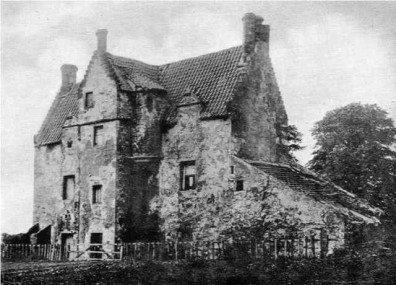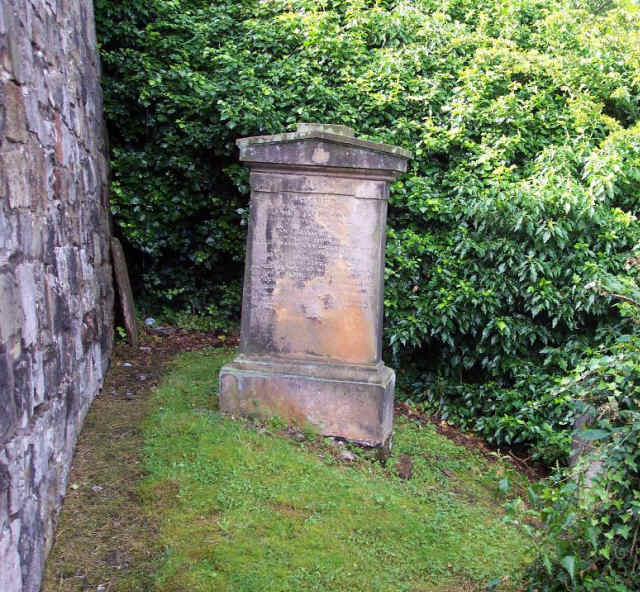




JAMES JAMIESON
In 1828, the new owners of the pottery were two Bo’ness businessmen, James Shaw and James Jamieson. James Shaw was a timber
merchant. James Jamieson, his son in law, had been working in the pottery prior to its failure and he took over the direct running of the
pottery.
Jamieson died on May 29th the following year, 1829, leaving his 3 year old son, James, to inherit the business.
The pottery was then managed by James Shaw (his grandfather), James Shaw (his uncle), Robert Syme and Janet Jamieson
(his mother). This was the “Company” of James Jamieson & Co. It was in the Jamieson period that the Bo’ness Pottery started to mark
its wares with J J & Co and J Jamieson & Co being the standard marks.
The pottery rapidly expanded, occupying land on both sides of Main Street and in 10 years, from 1841 to 1851, the number of
employees trebled to over one hundred. Both the 1841 and 1851 censuses can be viewed here.
The Statistical Accounts of Scotland for 1845 state:
The Bo’ness Pottery commenced on a small scale in the year 1784, and has been carried on by
various individuals since that time. The present proprietors have greatly enlarged their premises,
and extended their works. They manufacture almost every variety of stone and earthen-ware.
James Shaw (the uncle) died on 30th December 1842. His estate was valued at £1,428, 14s, 2d. This included the sum of £300, his
fourth share in the pottery.
Three years later, James Shaw (the grandfather) died.
On 3rd June 1847, Janet Jamieson died. Her estate was valued at £1,730, 19s, 5d. This included her seven-sixteenths share in the
pottery, which was valued at £384, 1s.
Janet left her seven-sixteenths share to James, but with conditions... If the value of the shares was greater than the value of James’
proportion of Janet’s estate, he would have to recompense the other claimants to her estate or else find security to the
satisfaction of the other claimants. She left her house and grocery shop to her unmarried daughters.
Four weeks after Janet’s death, the following announcement appeared:
POTTERY FOR SALE IN BO’NESS
------
To be SOLD by Private Bargain,
ALL and Whole the PREMISES belonging to JAMES JAMIESON & Co., Earthenware
Manufacturers in Bo’ness. The Premises are extensive, the Business of many years’
standing, and the Work at present in full operation. Coals are to be had in the
neighbourhood, and the Town is supplied with a good Harbour.
Should any party prefer Leasing the Work, the Proprietors will be open to receive
offers for a given number of years.
To a person of enterprise, with a moderate capital, such an opening is seldom to be met with.
For farther particulars apply to James Jamieson & Co., Bo’ness; or John Marshall, corn merchant there.
Bo’ness, 1st July 1847.
It would appear that James did not have the capital to recompense the other claimants. However, some agreement must have
been reached because the pottery remained in James’ hands.
On 21st July 1847, Robert Syme ceased to be a partner in the pottery when he sold his shares. Robert Syme died in 1848.
In a short period of time, the firm had lost the expertise and knowledge of the “Company”. This would prove to be irreplaceable.
By 1851, the workforce was 106, comprising of 81 men and 25 women. The census showed that a third of the workers came from
outside the district, with many coming from Staffordshire.
On 8th February 1853, James married Robina Ramsay and three months later on 14th May, his sister, Ann, married James Balfour
Robertson who was according to the parish records, traveller for James Jamieson the Bo’ness Pottery. It was James Balfour Robertson
who became James’ business partner, probably as a result of marrying in to the family, but on the 10th July 1854, both the company
and the personal estates of both men were sequestrated. John Austine, manager of the Redding Coal Company, was appointed Trustee
and kept the pottery open. However, the business went up for sale in September 1854.
James Jamieson died on 7th November that same year, one month before his 28th birthday. As a result of this untimely death, the
financial complications that followed delayed a change of ownership until August 1855.
The sale was advertised as follows:
POTTERY STOCK-IN-TRADE, PREMISES AND GOODWILL OF BUSINESS FOR SALE
There will be exposed to SALE by PUBLIC ROUP, within the sale rooms of Messrs. Dowells and Lyon,
George Street, Edinburgh, on Wednesday, 20th September, 1854 at two o'clock afternoon, belonging
to the Sequestrated Estates of James Jameson and Company, Potter, at Borrowstounness, in the county
of Linlithgow, the 7-16th pro indiviso parts or shares of the whole subjects, comprising the SOUTH POTTERY
of BORROWSTOUNNESS, the property of the Bankrupts and the LEASE of the REMAINING 9-16th pro indiviso
PARTS or SHARES of said POTTERY, up to Whit-Sunday, 1874, with the whole MACHINERY and UTENSILS
used in the Manufacture of Earthenware, consisting of two high-pressure Steam Engines of six and twelve
horse power, with boilers and connections; Flint Mill, two Glaze Tubs, six Colour Tubs, Clay Mills,
Printing Presses, Moulds, Lathes, Screw Presses, Wheels and Cranes, &c.
Also, 7-16ths SHARES of the LEASE of the NORTH POTTERY of BORROWSTOUNNESS, held under his
Grace the Duke of Hamilton, for 99, from Whit-Sunday, 1787 and likewise the RIGHT to the REMAINING 9-16ths
of said LEASE up to Whit-Sunday, 1884, with the ERECTIONS, GAS-WORKS, and UTENSILS used in the Pottery.
Attached to the Potteries is a DWELLING-HOUSE, WHICH IS ALSO INCLUDED IN THE LEASE UP TO
WHIT-SUNDAY, 1874.
Also the whole MANUFACTURED STOCK-IN- TRADE and the RAW MATERIAL on hand at said Potteries.
These Potteries are well known in the market under the general name of the Borrowstounness Pottery, have
been in existence for upwards of fifty years and are at present in full operation, employing about 200 hands,
and capable of taking on 50 to 100 more. The machinery is in excellent condition, and the whole concern
presents an old-established, well-known, and most eligible opening to the trade. The rent payable for the
9-16th Shares of the Potteries and House is £100 sterling per annum, exclusive of the portion of that
payable to the Duke of Hamilton, being £4 1s 2d., and the Feu-Duty and other burdens are trifling.
For particulars, and also for inventories of the Stock, &c., apply to Kenneth Mackenzie, Accountant,
29 Northumberland Street, Edinburgh; John Austine, Manager Redding Colliery, by Falkirk, Trustees
on the Estates; John Hardy, writer, Linlithgow; Robert Aitken, writer there; and John Robertson, S.S.C.,
63 Hanover Street, Edinburgh, the latter of whom is also in possession of the leases, title-deeds and
articles of roup. Edinburgh, 30th August, 1854.

The extent of the pottery in 1854

In 1841, Robert Syme lived in part of Grange House, right

After their marriage, James Jamieson and his wife, Robina,
lived in Woodhead, left

1848
SACRED
TO THE MEMORY OF
JAMES JAMIESON
LATE POTTER IN BO'NESS
AND
JANET SHAW HIS WIFE
AND THEIR CHILDREN
JAMES JAMIESON DIED 29th MAY 1829
AGED 39 YEARS
JANET SHAW DIED 3rd JUNE 1847
AGED 57 YEARS
JAMES JAMIESON DIED MARCH 1819
THOMAS JAMIESON DIED 23rd MAY 1833
MARY JAMIESON DIED 20th MARCH 1845
also JAMES JAMIESON DIED 7th NOV 1854
AGED 28
WHO FOR SEVEN YEARS SUCCESSFULLY
CARRIED ON THE BO'NESS POTTERY
The Jamieson family grave is in the old parish church graveyard in Corbiehall